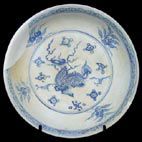The Royal Nanhai shipwreck site was found littered with celadon ware from the famous Sisatchanalai kilns in Thailand and a few Chinese celadon plates. The archeological excavations of the site provided many new data. Museums and antique collectors appreciated some of the finest 15th century celadon wares ever seen in the market. A description of the remains of the ship and a report of its 15th century celadon ware has been finalized by Sten Sjostrand of Nanhai Marine Archaeology. The vessel appears to have measured 28x7 meters and seems to be of a typical South China Sea design. This type of vessel, a hybrid that combines Chinese and Southeast Asian elements, has hull planks joined by wooden dowels, and transversal bulkheads. Samples of the wood have been analyzed and identified as Hopea Sp., a type of tropical hardwood native to most parts of Southeast Asia. More details of all shipwrecks excavated by Nanhai Marine Archaeology can be found on www.mingwrecks.com.
A lateral mast support near the vessel's bow consists of two vertical planks; each with a rectangular hole cut true its centre. It is likely that wooden beam (now missing) once penetrated the two supports and restricted the longitudinal movements of the mast. Another feature, not previously reported, is the transversal bulkheads which include a support frame that usually is a separate piece of timber
The recovered celadon ware from the Royal Nanhai includes numbers of rare Chinese celadon plates. The largest portion is celadon in various shapes from the Sawankhalok (Sisatchanalai) kilns. Eighty percent of the pottery is however severely deteriorated, partly due to its long salt water submersion. The recovered finds also include Sawankhalok black-glazed storage jars, some of which was
stowed below deck. A number of these jars had remains of fish bones from a salt-water
fish that is still a delicacy in Southeast Asia.
Extensive analysis of thousands of the celadon dishes has yielded new insights regarding the decoration of these wares, their potting and glazing and the firing techniques used to produce them. One specific group of dishes was singled out with this analysis, a set of dishes that might not have been apparent otherwise. This set proved to have more elaborate decoration, better survival grade, straight foot-rim and little reoxidizing coloring in its base. These dishes are likely to have been produced in a separate kiln that had perfected the full techniques of celadon production.
Seven pieces of blue and white pottery from China and Vietnam were also discovered, surprisingly and perhaps significantly, in a secret compartment next to the keel and below all other cargo. Blue and white ceramics are thought to have been especially scarce in the period AD. 1370-1440. The presence of these blue and white pieces, and the style of their painted designs, suggests a date for the wreck of mid-15th century. This date is supported by a carbon-14 date corresponding to AD.1400 +/- 70-years.
More than 2.600 ceramics from the cargo were donated to the National Museum in Kuala Lumpur where they will always be available for future study. Another assemblage of representative wares was given to the Pekan Museum in Pahang State for the same purpose.
The ten shipwrecks excavated by Sten Sjostrand of Nanhai Marine Archaeology can be read about in greater detail on mingwrecks and The Wali Shipwreck
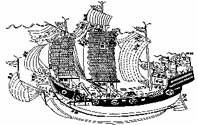
Incised decorations on the Royal Nanhai celadon
plates appear to be the best of all times
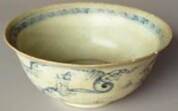
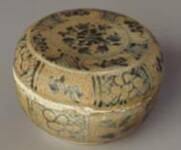
Chinese blue & white bowl from the Royal Nanhai
Vietnamese covered box
from the Royal Nanhai
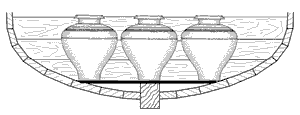
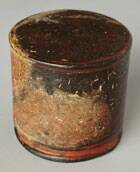
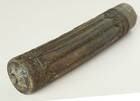

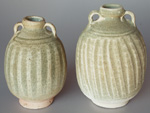
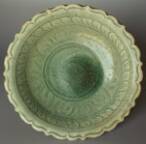
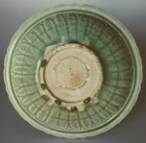
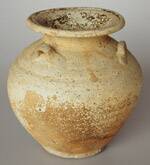
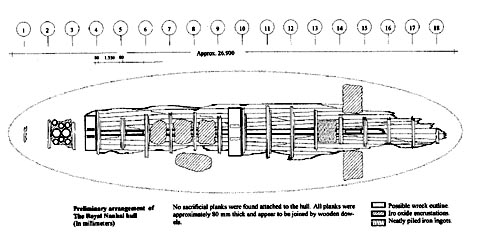
Celadon jarlets come in many shapes
Ring-handled bottles
The most interesting shape is the large celadon dishes, much liked by collctors
Few stoneware storage jars are also available for sale
Pofessor Wan Qingzeng at Shanghai Museum say's that a similar 'moon hare' motif were used in Chinese blue and white porcelains during the 14 th century.
A hidden compartment on the Royal Nanhai contained an arsenal of unusual artefacts. Loaded below the main cargo in a separate compartment, these objects were not immediately available to anyone onboard. The artefacts included; a personal seal, a lacquer box, ivory sword handle and numbers of Chinese and Vietnamese blue and white porcelains
Preliminary layout of the Royal Nanhai -550 years later
Copyright: Sten Sjostrand 1998
Antique celadon ware and Chinese celadon plates from the Royal Nanhai shipwreck is now for sale: Artifacts for Sale
 | ||||||


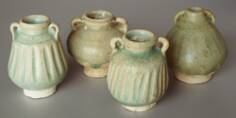
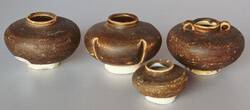

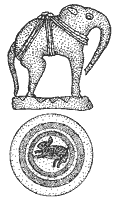
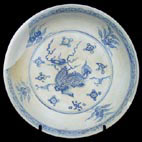

Chinese dish, normally ascribed to the Inter-regnum period (1450-64)
Click on the pictures to enlarge

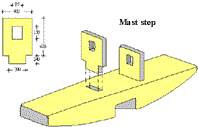
THE ONLY PLACE WHERE YOU CAN BE SURE TO BUY GENUINE ANTIQUES
Nanhai Marine Archaeology Sdn. Bhd. was incorporated on the recommendation of the Malaysian authorities. This was done in order to formalize and to expand on the company’s researcher’s extensive knowledge of Asia’s ceramic developments and maritime trade.
The company’s researchers have been engaged in the search for historical shipwrecks for more than two decades and another decade researching maritime trade. Most of this work is concentrated to the South China Sea, a virtual highway for ancient shipping linking China to India, the Middle East and Southeast Asia in an extensive maritime trade system. This ancient trade started sometime around the 4th century and lasted well into the 19th century.
Following a successful shipwreck discovery, the company obtain a government permit to excavate the wreckage, and then carry out detailed marine archaeological procedures in recovering the artifacts, mapping the ship's remains and securing other data for future research. After each concluded project and following conservation of recovered artifacts, we search for and pinpoint ruined kiln sites and compare its wasters with the recovered ceramics until we are satisfied we located the place in which the shipwreck pottery was made centuries earlier.
As such we have precisely located a kiln sites in Sisatchanalai, northern Thailand in which our Royal Nanhai and the Nanyang shipwreck celadon ware was made around AD. 1380-1460. (See videos on: http://www.ming-wrecks.com/photopage.html ) Other kilns was located in Sukhothai where production wasters matched the fish and flower plates found on the Turiang and the Longquan shipwreck. These unique underglaze decorated wares was made at those exact kilns 600 years earlier! Our latest shipwreck cargo; The Wanli Shipwreck, of Chinese blue and white porcelain, was likewise pinpointed to the Guangyinge kiln site in Jingdezhen, China. (See video on: http://www.ming-wrecks.com/photopage.html )
Our arrangement with the Malaysian authorities is such that we finance all operations and train young Malaysian nationals (on our initiative) in maritime archaeology and related research. After giving all unique and single artifacts and thirty percent of all recovered items to the National Museum (and assisting with exhibitions of artifacts from each project) we are allowed to sell our portion of the recovery to finance future projects. The findings from ongoing research and the compilation of reports, books and catalogues are available on these pages as well as on a separate Internet site: http://www.maritimeasia.ws
Due to the unquestionable authenticity and precisely dated shipwreck pottery, many International Museums now display our shipwreck pieces as reference material.
The artifacts sold on this website are therefore legally and properly excavated and can be supplied with an export permit from the Department of Museum in Malaysia should this be required. This unique working arrangement makes us one of the few Internet sellers that sell from own excavation and issues a meaningful Certificate of Authenticity with all artifacts with a sertial number.
So, if you are interested to purchase some of our Antique porcelain, old time pottery or other shipwreck artifacts from the Song dynasty, Ming porcelain or Chinese blue and white porcelain or the famous Yixing teapots, you can rest assured that every piece is excavated through proper archaeology by our own staff. We do not sell anything that is not excavated by ourselves or properly recorded and researched before offered for sale so every piece comes with the “Best possible provenance”
WE ENCOURAGE YOU TO EMAIL OUR PRINCIPAL RESEARCHER; Sten Sjostrand SHOULD YOU HAVE ANY QUESTIONS ABOUT YOUR POSSIBLE PURCHASE
CLICK ON BELOW IMAGES TO VIEW OUR SALES PAGES
This site is about antique celadon ware, Chinese celadon plates, celadon, archeology, celadon pottery, Royal Nanhai, shipwreck pottery, shipwreck artifacts, artifact for sale, Sisatchanalai
 | ||||
Nanhai Marine Archeology Sdn. Bhd.
CLICK ON ABOVE IMAGES TO VIEW OUR SALES PAGES.
OTHER WEB PAGES RELATED TO ANTIQUE CELADON, CHINESE PORCELAIN,
SHIPWRECK POTTERY AND ANTIQUES FOR SALE
